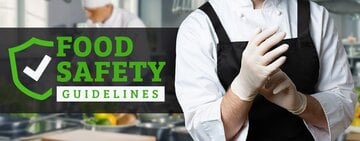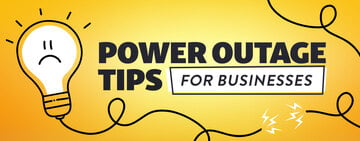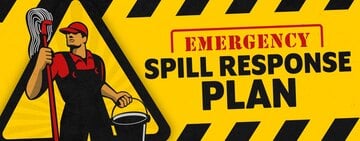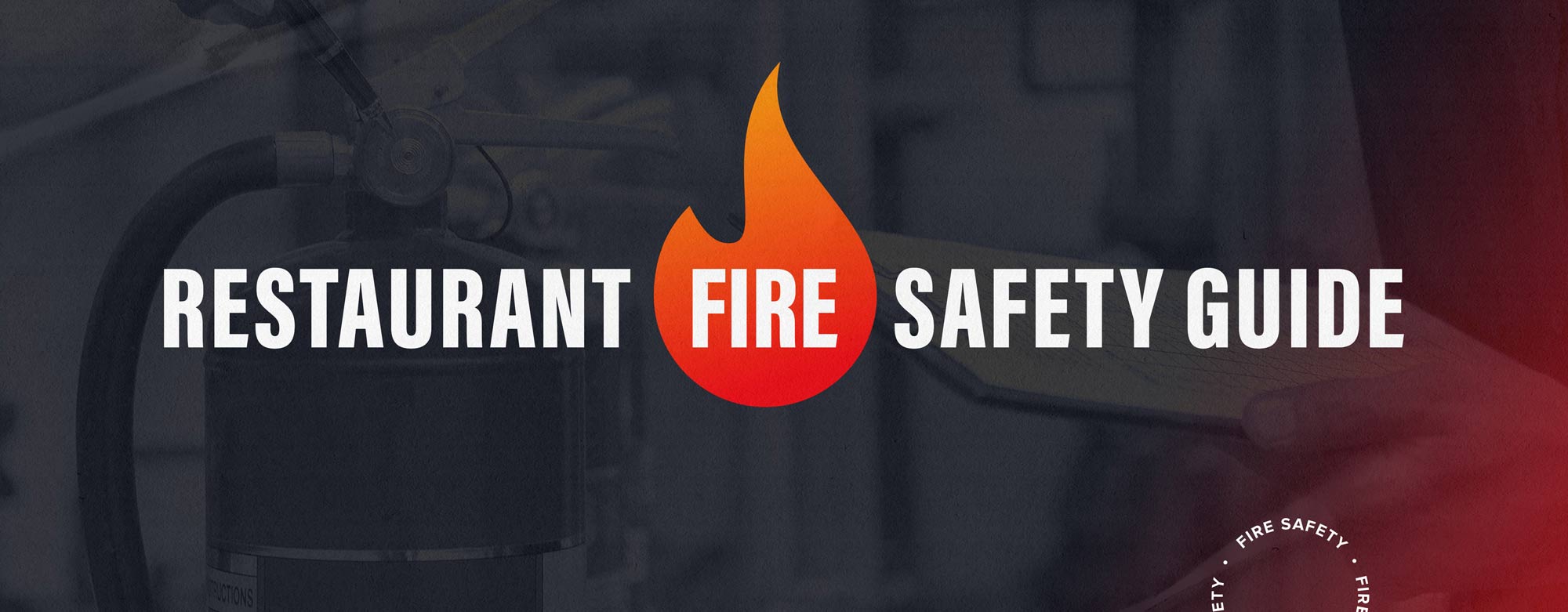
Fire safety is a critical concept for any restaurant to grasp because doing so can prevent thousands of dollars of damages and serious injuries. Unfortunately, the majority of commercial fires occur in restaurants due to the variety of flammable objects found in active kitchens. Understanding how to prevent restaurant fires and what to do when an uncontrollable fire breaks out helps mitigate damages and potentially saves lives. Preparing your restaurant for fire prevention and response can be tricky, so if you’re looking for tips to improve your restaurant's safety, check out this comprehensive guide on restaurant fire safety.
Looking for fire safety supplies for your restaurant? Click below.
Shop All Fire Safety EquipmentFire Safety Training
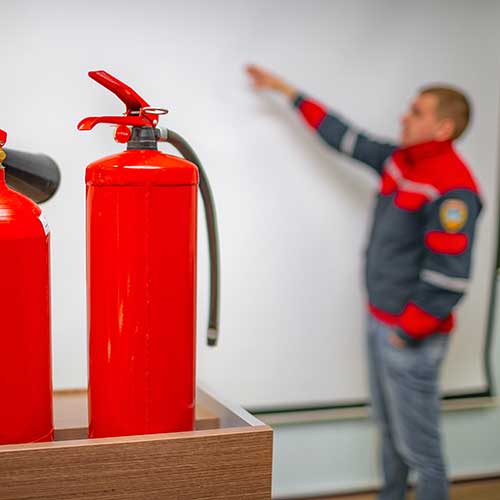
One of the most important aspects of restaurant fire safety is ensuring your establishment has thorough fire safety training. Employees should be instructed on fire safety protocols, learning steps they can take to prevent fires and the common fire hazards to avoid. Additionally, it is critical that employees are well-trained in fire response, allowing them to react to fires safely. To develop a thorough fire safety course, include the following in your establishment's training:
- Fire Safety Equipment - All staff should know how to handle and use fire safety equipment and emergency supplies such as fire extinguishers.
- Power Sources - Kitchen staff should be aware of various power source locations and how to turn them off to prevent fueling a fire.
- Crisis Response - Train employees on how to respond calmly to emergencies such as fires, preventing panic and fear.
- Types of Fires - Instruct staff on the different types of fires that can occur in the kitchen, and how to respond to them.
- Chemical Safety - Teach employees how to safely handle dangerous chemicals and other flammable objects.
- Refresher Courses - Provide employees with frequent fire safety refresher courses to ensure information stays fresh in their minds.
Fire Safety Checklist
To keep your restaurant safe from fires, your establishment should be equipped with a variety of tools and plans. When you have the right safety measures in place, not only can you respond to fires better, you can even prevent them altogether. When outfitting your restaurant for fire safety, here is a checklist of the most important aspects to cover:
- Exit signs should be installed and visible above all exits, and employees should be aware of emergency exits at all times.
- A fire exit should be mapped out, posted on walls, and taught to employees.
- All exits should be kept open and free of debris so evacuation can take place quickly.
- Appliances and other equipment should be inspected and maintained on a routine basis to reduce the risk of catching fire.
- All flammable objects such as liquids and chemicals should be stored as intended to prevent catching fire.
- Fire extinguishers should be placed around the establishment, especially in areas where fires are more likely to occur.
Restaurant Fire Codes
Restaurant fire codes dictate that some type of fire protection is required for all restaurants. Legal requirements may differ based on the size and location of your restaurant, meaning some restaurants are legally required to have more fire protection than others. Be sure to double-check your local and state laws to ensure that your restaurant’s fire prevention systems are up to code.
Fire Alarm Systems
Fire alarm systems are an important defense against fire damage, allowing occupants to be warned of fire danger. A fire alarm system is required to be equipped with clearly visible signals or a voice announcement, making it clear to all occupants that a fire is happening. To activate a fire alarm system it needs to be initiated either manually via a lever or automatically through the detection of smoke and heat.
Fire Sprinkler Systems
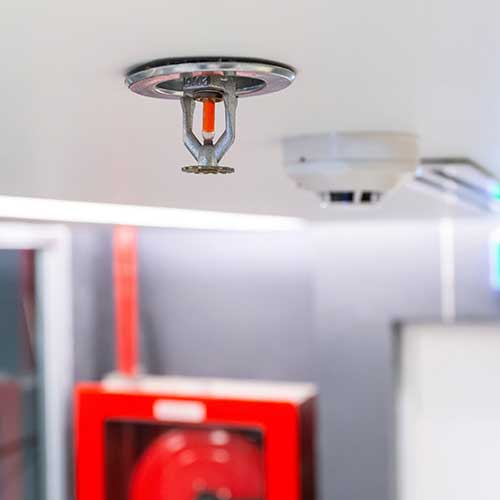
A fire sprinkler system is a fire protection method that consists of a water supply, a water distribution system, and sprinkler heads that allow for discharge. There are four different types of fire sprinkler systems, but wet pipe sprinklers are the most common type found in kitchens. Water isn’t always the best in dealing with grease and chemical fires that are commonly found in kitchens, so it’s recommended that you have some other form of fire suppression to complement your sprinkler system.
Fire Suppression Systems
Unlike fire sprinkler systems, fire suppression systems do not use water and instead use a variety of other agents. A fire suppression system is engineered to detect fire through heat and smoke, discharging chemical agents to control the fire either manually or automatically. Most restaurant fire suppression systems use wet chemicals to deal with common kitchen fires like grease fires and class K fires.
Restaurant Kitchen Hood Exhaust Systems
Kitchen hood exhaust systems are another important part of kitchen fire safety, providing ventilation and removing hazardous particles from the environment. When a kitchen hood is installed, it can help reduce the build-up of smoke and grease, helping to prevent fires. You should routinely inspect and clean your kitchen hood exhaust systems, as a dirty ventilation hood can build up grease and become fire hazards. For more information about kitchen hood exhaust systems and how they can make your kitchen a safer place, check out our guide to kitchen hood code requirements.
Kitchen Fire Extinguishers
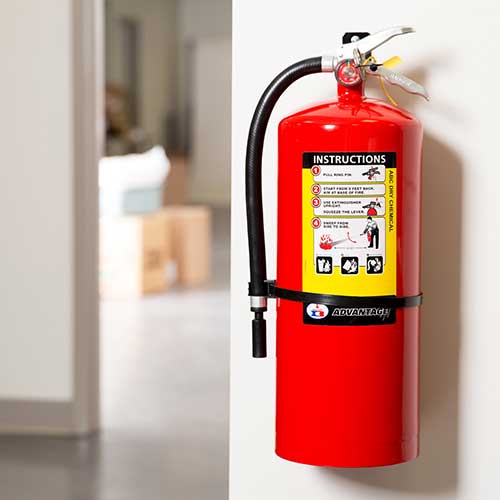
Fire extinguishers are one of your restaurant’s main tools in stopping fires once they break out of control. When used, a fire extinguisher will discharge an agent that is designed to suppress fires. Typically, fire extinguishers are used as a last resort, as fire prevention and other forms of fire safety are usually enough to get the job done. In the event of a serious fire, all employees should know how to use a fire extinguisher to stop a fire if necessary.
Class K Fires
Commercial kitchens are the most common location for class K fires to occur, so your staff should be well-educated on the topic. Your kitchen should also be outfitted with specific equipment dedicated to responding to class K fires.
What is a Class K Fire?
A class K fire is a fire that is caused and fueled by flammable cooking liquids such as vegetable oils. Cooking with flammable liquids can be precarious because class K fires are known to spread fast and cause lots of damage. Vegetable oils burn at hotter temperatures than animal fat, which creates scorching hot fires that are difficult to extinguish. Staff should keep a close eye when cooking with flammable liquids, and equipment designed to deal with class K fires should never be far off.
Class K Fire Extinguisher
Class K fire extinguishers are a type of fire extinguisher that is specifically designed to handle cooking fires. These fire extinguishers use wet chemical agents that are designed to starve a fire from the fuel it requires. Only class K fire extinguishers are effective at dealing with class K fires, as dry chemical agents aren’t enough to deal with the volatility of this type of fire. You should never use anything else to handle class K fires, as pouring items such as water over the fire will only cause it to spread faster.
Restaurant Fire Evacuation Plan
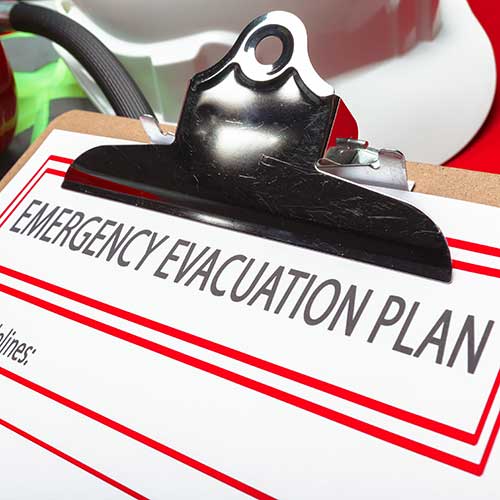
Even when preventative measures are taken and your restaurant is equipped to deal with a fire, unforeseen scenarios involving an out-of-control fire can still take place. Your restaurant must have an evacuation plan in place to make sure all employees and customers make it out of the building in the event of an uncontrollable fire. To ensure that everyone within your restaurant stays safe, here are some steps you need to take:
- Create an Actionable Plan - Have a written actionable emergency plan in place and require that every employee is trained to know it.
- Designate an Evacuation Manager - Every shift, assign a designated staff member that is responsible for calling emergency services and overseeing a safe evacuation.
- Follow Fire Routes - Employees should know the restaurant’s emergency fire routes and are responsible for instructing customers and making sure they get out safely.
There are many aspects of restaurant fire safety that your establishment needs to understand to minimize the risk of a dangerous kitchen fire. Although establishing fire safety in your restaurant is extensive work and requires a lot of effort, it is well worth it. When you take the necessary steps for fire safety, you create a safer environment that helps protect your property, employees, and customers from disaster.



